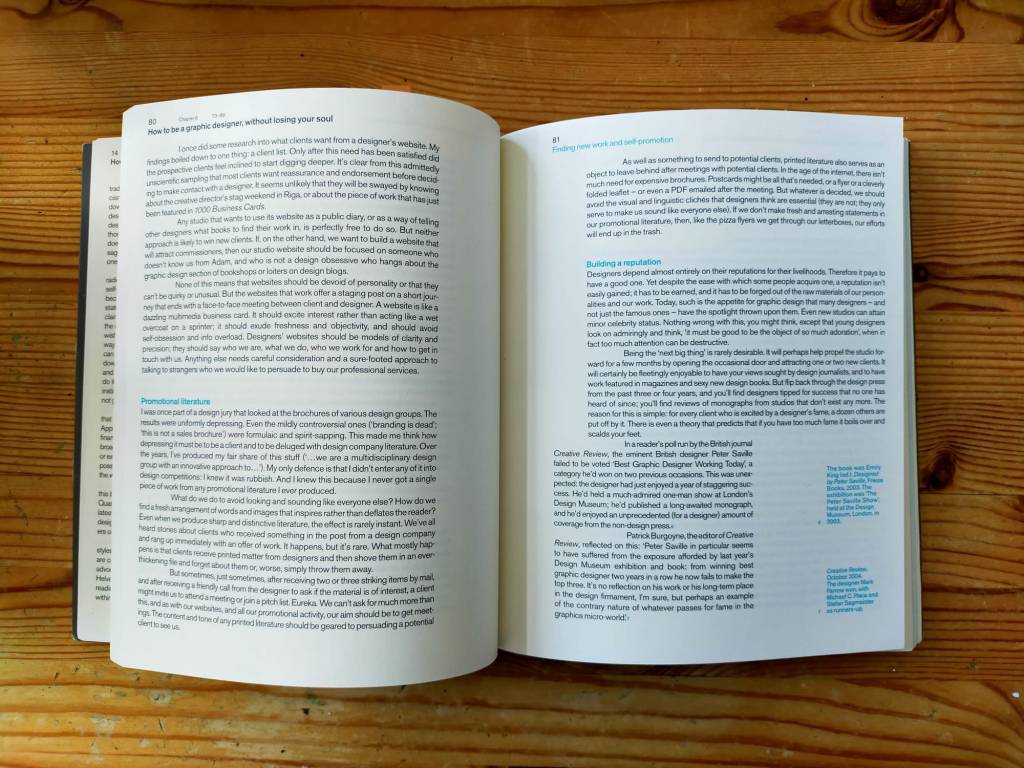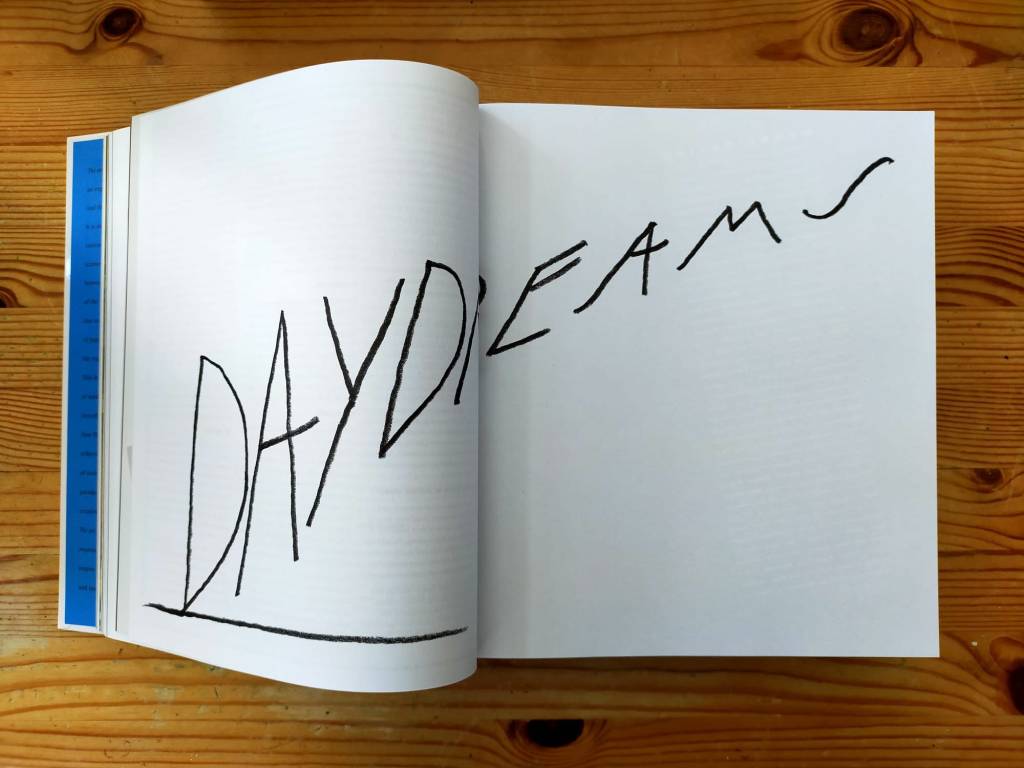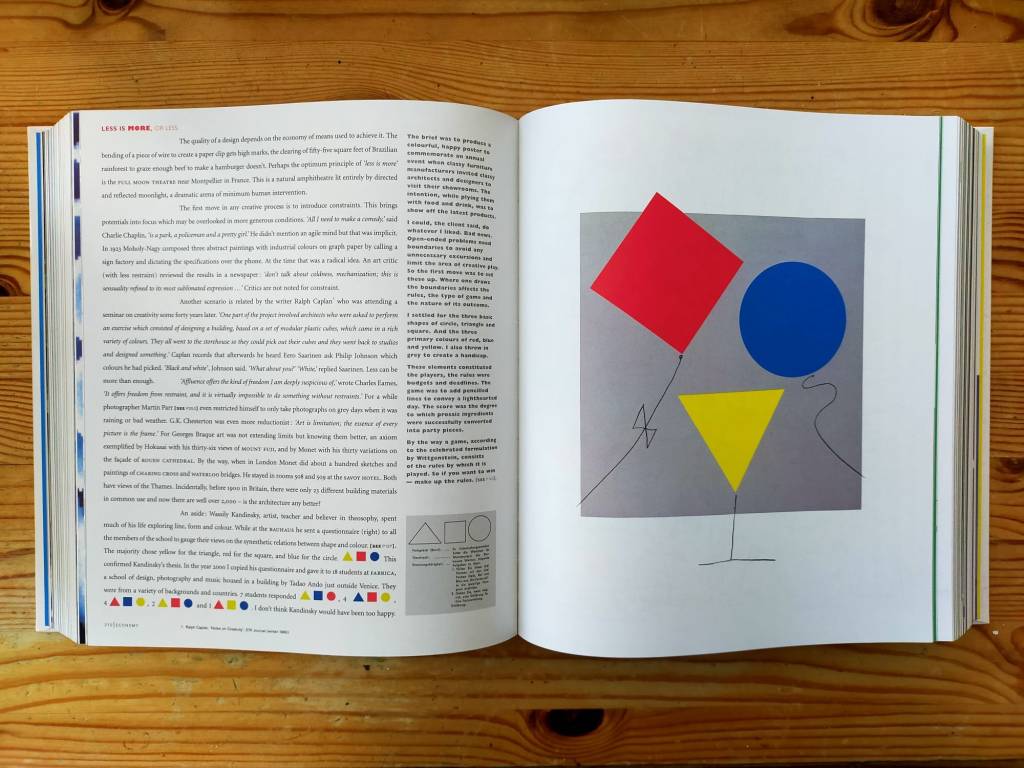Studio & Entrepreneurship
This weeks lecture with Craig Oldham spoke about his theory of what a role of a Graphic Designer is truly known for in today’s practice. Craig is renowned for his publishing work in using his design craft to communicate the content that he wishes to author. Craig makes it clear that as graphic designers we have the passion to create and want to create what we believe is the correct solution, but clients will always be the obstacle in soul-destroying your work. We need to accept this approach and look at other channels in showing the best of our craft through self-initiated projects. In doing so we should apply our creativity through other means of practice like writing, photography, moving imagery and other ways that we can apply our practice in thinking of solutions that give us creative freedom. So when approaching a project we need to interrogate ourselves in finding what we enjoy in this project to make it a success and Craig points out three questions that will help understand our motive. This will leave you in a position where you will get the maximum out of the job with accepting where you stand with the client and the audience. Craig talks about content is key to the success of a designer as it can lead to ideas that may help develop a medium you wish to pursue. So content is very important to authorship in this lecture and publishing books on subjects that may interest you will lead to audiences that will enjoy it too. This may be 100 to 1000 people that may contribute to a project that you share with others to create a book that becomes a collector’s item.
Chip Kidd: Designing books is no laughing matter. Ok it is.
This Ted Talk from Chip Kidd is a brilliant watch as he expresses his desire for physical book design is better than ebooks or any digital form of books for the audience to read. Books give form to content, which this expression is spoken about the importance book design should be part of any story that needs telling to an audience through the book cover. As Craig Oldham explains content is important, it’s the same for Chip Kidd as his desire to explain the importance of book designs can identify the meaning of the content to any book. Book designers have to be interpreters and translater to tell the story of a book from its first impression of a book jacket. This can be said to any item or product that has been designed from past to present that can attract the audience in picking something up to find out more. eBooks are easy, convenient and portable, but they are not traditional, essential experiences and comfort of thingies for the audience to enjoy and embrace in the stories that are meant to be told.
Ronny Edry : Israel and Iran: A love story?
I really enjoyed this talk from Ronny Edry as he explains his idea of making peace with Israeli and Iranian people in coming together through visual tools that can be shared across social media platforms. Ronny Edry created a poster with a photo of him and words that explained ‘Israeli loves Iran’ which became an internet sensation between the two countries to share content that will battle against the governments wishes to cause conflict between the two countries. This example shows how content can form a united front in dealing with media news that tells the story of the negative impact of the two countries. Ronny Edry took to a different angle in finding the answer through sharing peoples emotions that truly feel they’re being spoken for by others which are sending negative content to the world. This has driven millions of people in interacting with content that shares the real value of the people from Israel and Iran and making others from across the globe realise there are good things to come in joining together in making a positive change in peace.
Workshop Challenges
The first part of this weeks challenge is to find two examples of designers who demonstrate authorial / making expertise in the delivery of a component of their practice. I have a good collection of books on designers that authors expand from Jan Tschichold to Alan Fletcher which I’ve collected over the years of my studying and interest in design.

My chosen designers for this exercise are Adrian Shaughnessy and Alan Fletcher as I find the books I’ve read and enjoyed particular the use of content that was essential to the audience at a time when it was needed. They share two books I mostly enjoy which are ‘How to be a graphic designer, without losing your soul’ by Adrian Shaughnessy and ‘The art of looking sideways’ by Alan Fletcher. These books were particular useful to shaping the way I see in appreciating and being in a practice of design up until today.
Adrian Shaughnessy is a graphic designer and writer that co-founded Intro in 1989 where he established a successful agency. Adrian has published some outstanding books on design throughout his career and it was his book ‘How to be a graphic designer, without losing your soul’ which was one of many books I purchased when I completed my degree. This book was very influential to me from the start and still, today, where he shares his insight in the industry and being true to yourself, is the guarantee to success. When he released the book in 2010 there weren’t many books like his` that would explain the secrets in becoming a designer and how to hit the industry running. Adrian success through writing is the founding of his joint publishing venture Unit Edition where he is a partner with Tony Brook and Patricia Finegan (both Spin). A publishing house that specialises in design books where they can create meaningful books that focus on the design industry through different practices and design thinking.
Alan Fletcher is the most highly regarded graphic designer of his generation, and probably one of the most prolific. An outstanding designer with a rich history of design thinking has made an impact on every designer today. His book ‘The art of looking sideways’ was his biggest publishing success that brought joy and imaginative thinking to a whole new level in commercial design. The content of Fletcher’s original material is a reflection of prolific references that is to do with a visual language to embraces the audience to read in parts throughout the book. It’s a brilliant coffee table book that you can pick up from any point to read a snippet of inspiration that brings joy to every reader. Alan Fletcher knew exactly how he wanted to bring smiles to the mind of others when reading this book, which he found a gap in the design industry where design doesn’t have to be too serious when working on ideas and also speaking the truth of others in what they’re thinking in their own process. We can truly do something useful and inspiring throughout his work and this book shows the character that really reflects Alan’s personality and the practice that made him so prolific in the design world.
10 ideas
My 10 ideas derive from everyday happenings and focused on the things we need and look back on with an opportunity to make a change in bringing an audience to enjoy and reflect on making and doing.











